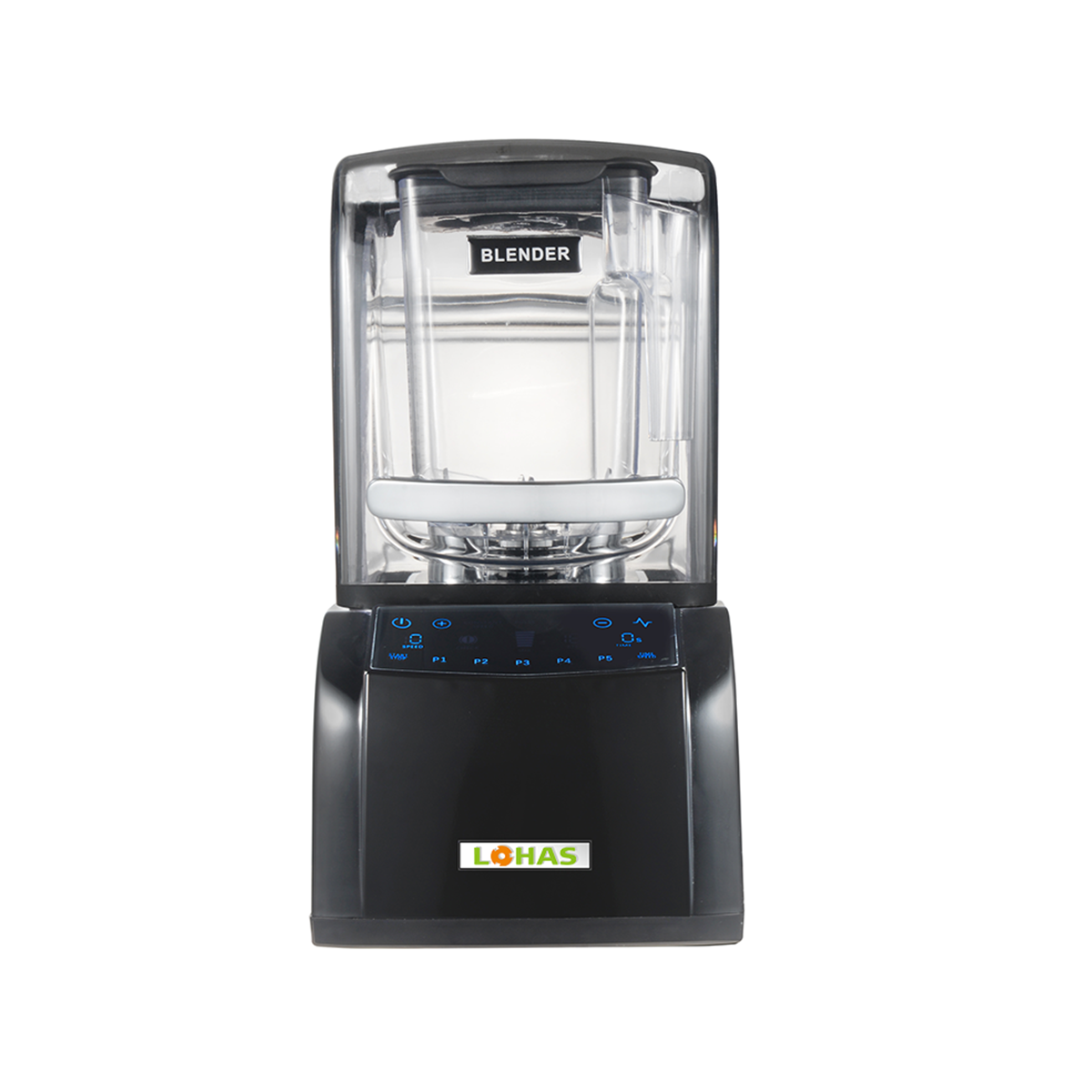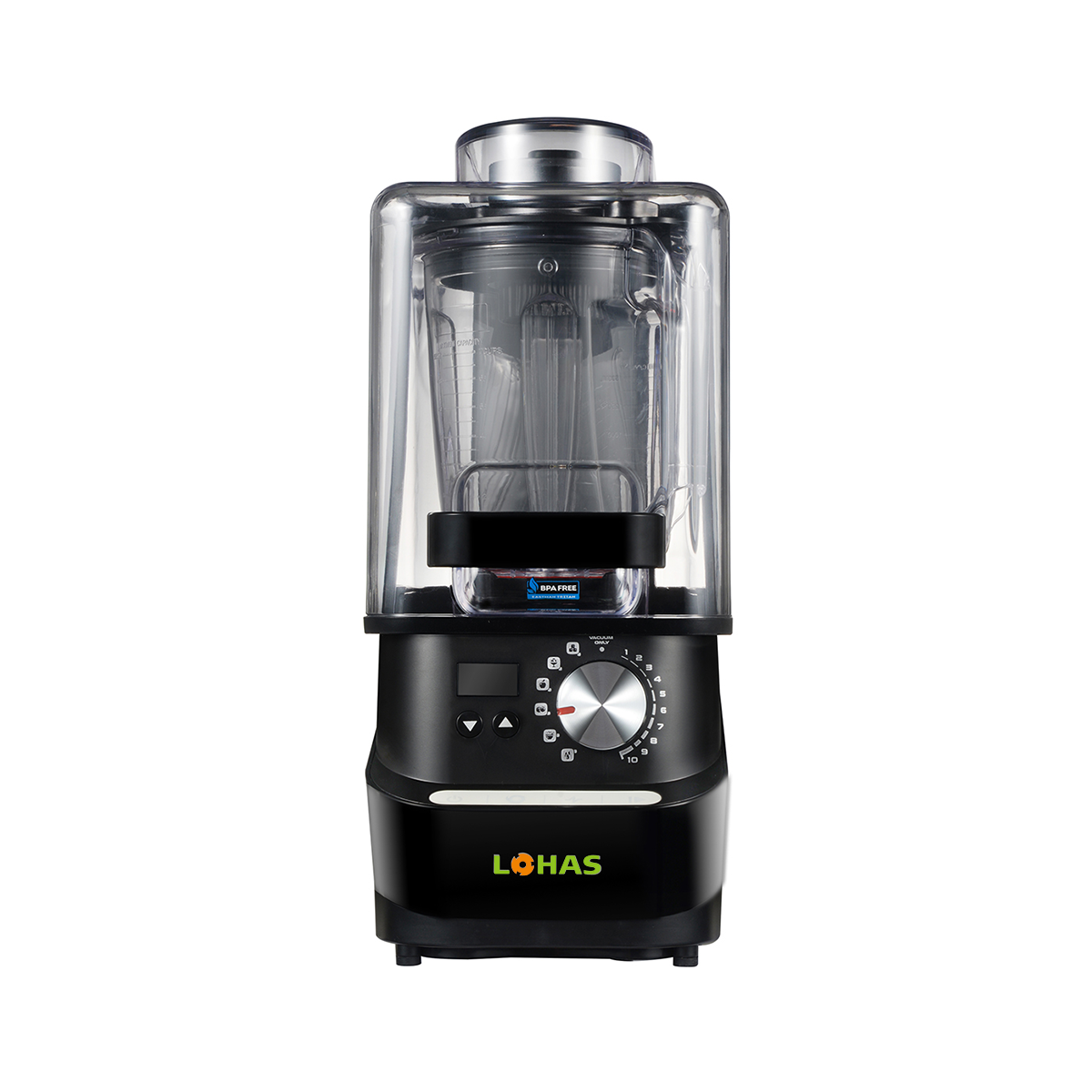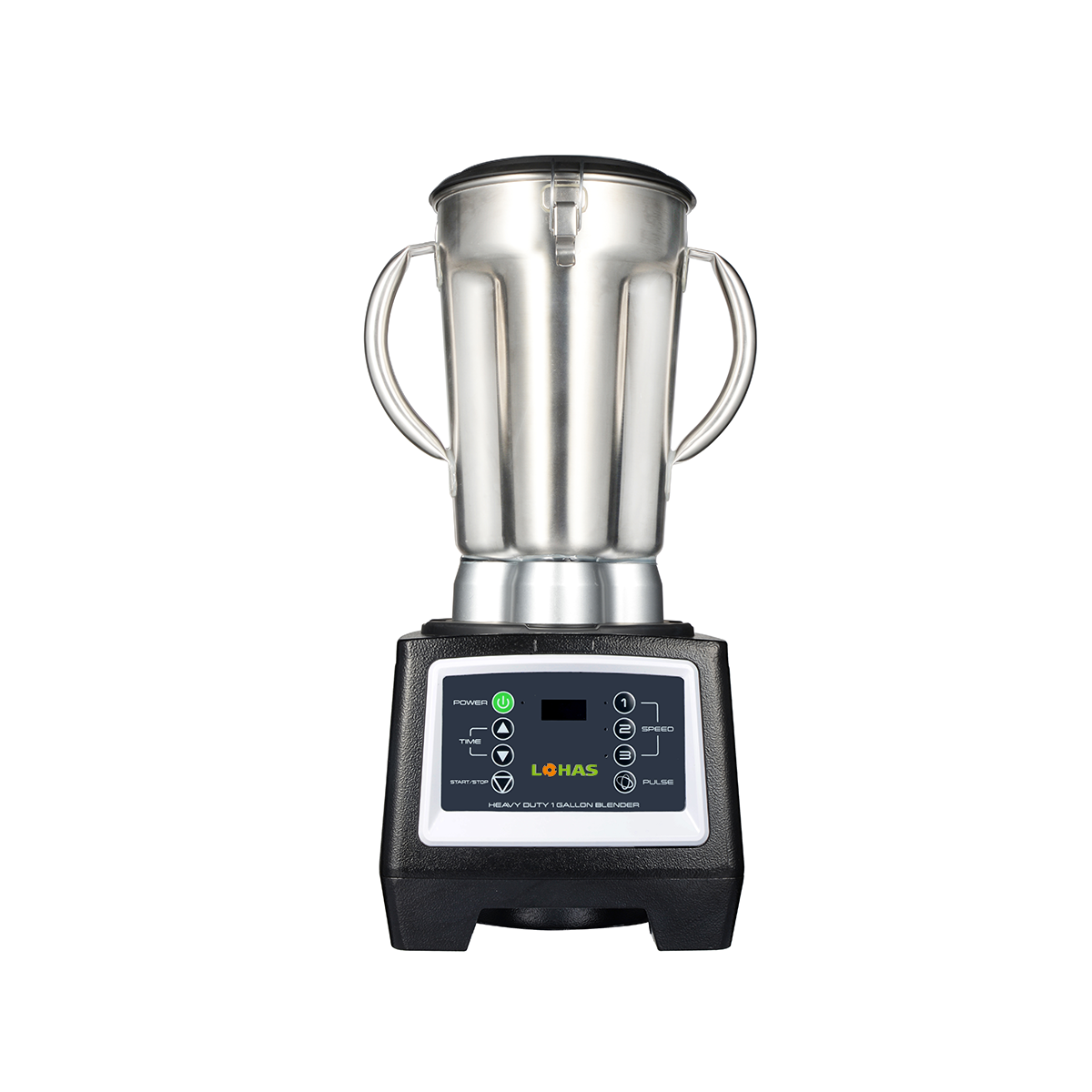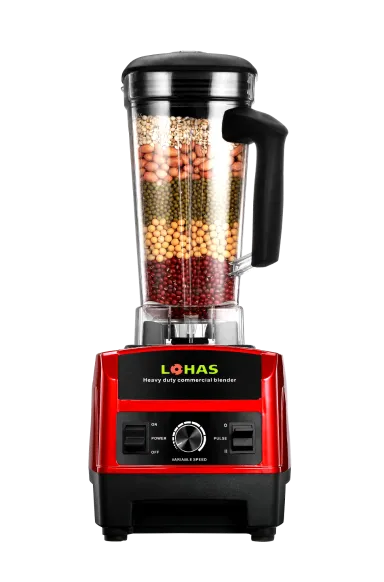Crearea de mese nutritive eficientă şi uşoară
În încercarea de a menţine obiceiuri alimentare sănătoase, aparatele de bucătărie care oferă atât confort, cât şi valoare nutritivă devin din ce în ce mai importante. Un astfel de instrument, blender pentru mâncare , a devenit un dispozitiv de care se pot folosi cei care doresc să pregătească mâncăruri sănătoase în mod eficient. De la sucuri şi supă la unt de nucă şi sosuri, amestecătorul de alimente este o putere multifuncţională care transformă ingredientele în delicioase, feluri bogate în nutrienţi cu un efort minim.
Beneficiile nutritive ale utilizării unui blender alimentar
Reţinerea nutrienţilor vitali în alimentele integrale
Spre deosebire de metodele tradiţionale de gătit care pot elimina vitaminele din legume şi fructe, o metodă de gătit blender pentru mâncare păstrează integritatea nutritivă a ingredientelor. Prin amestecarea alimentelor crude, utilizatorii menţin fibrele, antioxidanţii şi enzimele esenţiale pentru sănătatea digestivă şi a sistemului imunitar. Acest lucru face ca amestecătorul de alimente să fie un instrument valoros pentru oricine doreşte să-şi mărească aportul zilnic de produse proaspete.
Sprijinirea obiectivelor dietetice şi a planurilor de masă
Pentru cei care urmează diete specifice, cum ar fi keto, vegan sau paleo, un blender de alimente oferă soluții personalizabile. Fie că este vorba de amestecarea de shake-uri proteice cu conţinut scăzut de carbohidraţi sau de smoothies verzi de detoxifiere, aparatul permite utilizatorilor să-şi atingă obiectivele dietetice. Aceasta simplifică pregătirea mâncării și asigură consistența texturii și a gustului alimentelor.
Creativitatea culinară în creştere
Versatilitate în mâncare şi reţete
Mixerul de mâncare nu se limitează la sucuri de micul dejun. Ea joacă un rol vital în prepararea supelor, a humusului, a blatelor de clătite, a sosurilor şi chiar a desertelor. Această versatilitate încurajează utilizatorii să experimenteze ingrediente și rețete, creând mese variate și echilibrate.
Îmbunătăţirea texturii şi a gustului
Un blender de calitate obţine o textură cremă, netedă, care îmbunătăţeşte gustul şi prezenţa. Fie că este vorba de emulsificarea sosurilor pentru salata sau de prepararea supelor de legume, rezultatul este întotdeauna impresionant. Ea îmbunătăţeşte aromele prin amestecarea ingredientelor mai bine decât metodele manuale.
Economisirea timpului şi reducerea deşeurilor
Pregătirea simplificată a maselor
Un blender de mâncare accelerează procesul de pregătire a mesei în mod semnificativ. Ingredientele pot fi tăiate, amestecate şi turnate în câteva minute, reducând dependenţa de mai multe unelte de bucătărie. Acest lucru este deosebit de util pentru profesioniştii care lucrează sau pentru familiile ocupate care apreciază mesele nutritive, dar au timp limitat.
Folosirea ingredientelor rămase
Amestecătoarele de alimente permit utilizatorilor să reutilizeze în mod creativ resturile în mese noi. Fructele moi pot fi transformate în smoothies, în timp ce legumele suplimentare pot fi transformate în supă amestecată. Acest lucru nu numai că reduce risipa de alimente, dar, de asemenea, economisește bani și contribuie la o rutină de bucătărie durabilă.
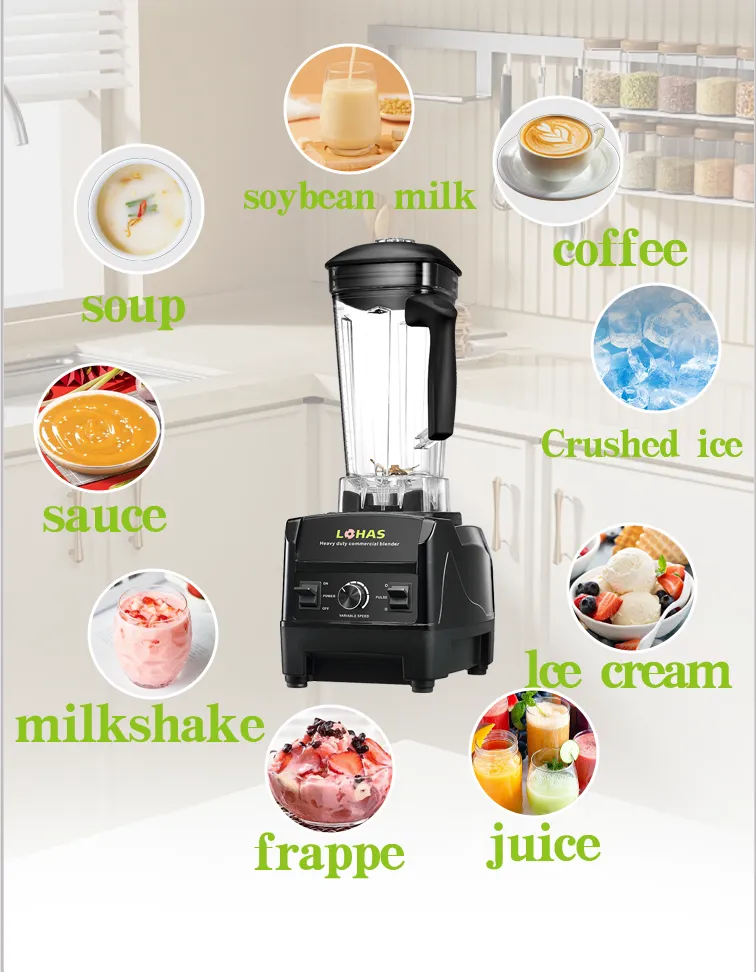
Caracteristici de căutat într-un blender de mâncare
Puterea motorului şi rezistenţa lamei
Un motor puternic şi lame durabile sunt esenţiale pentru un blender de mâncare pentru a manipula ingrediente dure, cum ar fi fructe îngheţate sau nuci. Aceste caracteristici asigură o combinaţie netedă şi reduc uzura în timp. Când alegeţi un blender de mâncare, luaţi în considerare modele cu rpm-uri mari şi lame puternice din oţel inoxidabil.
Capacitatea borcanului și materialul
În funcție de mărimea gospodăriei sau de preferințele de loturi de mâncare, capacitatea borcanului unui blender de mâncare poate face diferența. Familiile mai mari pot beneficia de blendere cu o capacitate de peste 60 de uncii. De asemenea, borcanele din plastic sau sticlă fără BPA oferă siguranţă şi durabilitate.
Promovarea unor obiceiuri alimentare sănătoase
Incurajarea consumului de mai multe fructe şi legume
Cu ajutorul unui blender alimentar, devine mai uşor să adăugaţi mai multe fructe şi legume în mesele zilnice. Smoothies, puree şi supă mixtă fac ca mâncarea nutritivă să fie mai accesibilă şi plăcută, mai ales pentru cei care mănâncă cu pretenţie sau pentru copii.
Sprijinirea obiectivelor de gestionare a greutăţii şi de bunăstare
Sucuri înlocuitoare de mâncare, amestecuri de legume bogate în fibre şi supe cu conţinut scăzut de calorii pot fi create cu ajutorul unui blender alimentar. Acest lucru face mai ușor pentru indivizi să monitorizeze aportul de calorii și să rămână dedicați obiectivelor de bunăstare fără a compromite gustul sau varietatea.
Mentenanţa şi îngrijirea amestecătorului alimentar
Sfaturi pentru curățenie și stocare
O întreţinere corespunzătoare prelungeşte durata de viaţă a unui blender de mâncare. Majoritatea modelelor au părţi sigure pentru mașini de spălat vase, dar spălarea cu mâna a lamei şi a borcanelor ajută la menţinerea ascuţirii şi clarităţii. Întotdeauna se usucă bine înainte de depozitare pentru a preveni mucegaiul şi mirosurile.
Soluţionarea problemelor comune
Dacă amestecătorul de alimente nu funcţionează aşa cum era de aşteptat, remediile obişnuite includ verificarea strânsului lamei, evitarea umplerii excesiv sau asigurarea faptului că borcanul este aşezat în mod corespunzător. Se consultă manualele de utilizare pentru soluțiile specifice modelului și se înlocuiesc părțile uzate, cum ar fi garniturile sau capacele, după caz.
Practică de bucătărie ecologică
Reducerea deșeurilor de ambalare
Prin pregătirea de mese și băuturi la acasă utilizând un amestecator alimentar, utilizatorii reduc dependența de produsele cumpărate în magazin cu ambalare excesivă. Această abordare ecologică contribuie la o amprentă de mediu mai mică.
Susţinerea unui stil de viaţă fără deşeuri
Amestecătoarele de alimente ajută la atingerea obiectivelor de zero deșeuri prin reducerea la minimum a resturilor neutilizate și promovarea utilizării alimentelor integrale. Pielea, tulpinile şi seminţele pot fi adesea amestecate în reţete nutritive, maximizând utilitatea fiecărui ingredient.
Progresele tehnologice în domeniul amestecatorilor alimentare
Funcții inteligente și conectivitate
Modelele moderne de blenderuri de alimente includ funcții precum programe de amestecare prestabilite, cronometre digitale și chiar integrarea aplicațiilor. Aceste îmbunătățiri adaugă precizie și comoditate, permițând utilizatorilor să își personalizeze experiența de amestecare cu un minim de ghicitori.
Reducerea zgomotului și eficiența energetică
Tehnologia avansată a dus la motoare mai silenţioase şi la proiecte care economisesc energie. Pentru utilizatorii care se amestecă frecvent sau devreme dimineața, aceste îmbunătățiri îmbunătățesc experiența utilizatorului fără a deranja gospodăria.
Investiţii în un blender alimentar pentru valoare pe termen lung
Eficienţă în ceea ce priveşte costurile
Deşi costul iniţial al unui blender de calitate poate fi mai mare, acesta se rambursează pe termen lung. Mâncarea preparată acasă este mai ieftină şi mai sănătoasă decât cele cumpărate în magazine, ceea ce duce la beneficii financiare şi de sănătate.
Durabilitate și susținere a mărcii
Marcile de amestecătoare de alimente fiabile oferă protecție în garanție și piese de schimb, asigurând utilizarea pe termen lung. Investirea într-un model bine revizuit înseamnă mai puţine reparaţii şi performanţe mai consistente de-a lungul anilor.
Întrebări frecvente
Ce fel de ingrediente poate manipula un blender de alimente?
Un blender poate manipula o gamă largă de ingrediente, inclusiv fructe, legume, gheaţă, nuci, seminţe şi chiar cereale. Modelele cu putere ridicată sunt potrivite pentru amestecuri dure, cum ar fi unt de nucă sau smoothies congelate.
Cât de des ar trebui să curăţ blenderul meu de mâncare?
În mod ideal, curăţaţi blenderul de mâncare după fiecare utilizare. Spălaţi imediat pentru a preveni acumularea de reziduuri şi faceţi o curăţare profundă săptămânală pentru a menţine igiena şi performanţa.
Pot folosi un blender de mâncare pentru ingrediente fierbinţi?
Da, dar asiguraţi-vă că amestecătorul de mâncare este proiectat să manipuleze lichide fierbinţi. Utilizaţi un capac ventilat pentru a permite aburului să scape şi pentru a preveni acumularea presiunii.
Este un blender de mâncare potrivit pentru prepararea mesei?
- Cu siguranţă. Un blender de mâncare este un instrument excelent pentru gătitul în serie a sosurilor, supelor sau smoothie-urilor care pot fi păstrate şi folosite pe tot parcursul săptămânii.
Cuprins
- Crearea de mese nutritive eficientă şi uşoară
- Beneficiile nutritive ale utilizării unui blender alimentar
- Creativitatea culinară în creştere
- Economisirea timpului şi reducerea deşeurilor
- Caracteristici de căutat într-un blender de mâncare
- Promovarea unor obiceiuri alimentare sănătoase
- Mentenanţa şi îngrijirea amestecătorului alimentar
- Practică de bucătărie ecologică
- Progresele tehnologice în domeniul amestecatorilor alimentare
- Investiţii în un blender alimentar pentru valoare pe termen lung
- Întrebări frecvente

